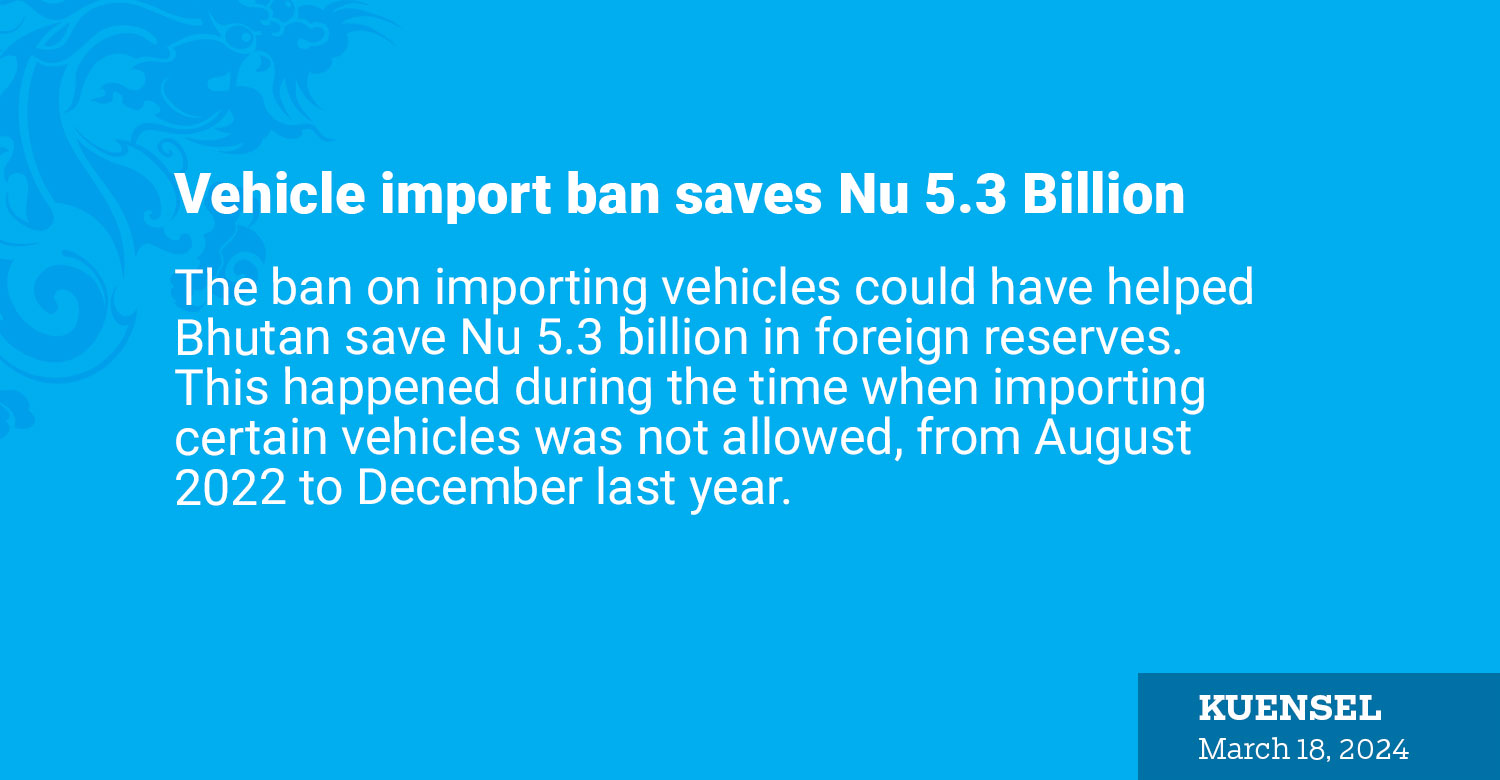
… imports saw a decline by over 70 percent in 2023
The ban on importing vehicles could have helped Bhutan save Nu 5.3 billion in foreign reserves. This happened during the time when importing certain vehicles was not allowed, from August 2022 to December last year.
Last year, Bhutan only imported vehicles valued at Nu 926.09 million, compared to Nu 3.2 billion worth of vehicles in 2022. This marked a significant drop by 71 percent in vehicle imports.
Yet, in 2021, the value of vehicle imports was substantial, reaching Nu 4.72 billion. This figure encompasses various types of vehicles such as passenger cars, vehicles for transporting ten or more people, goods vehicles, and electric cars, excluding motorcycles.
To safeguard Bhutan’s dwindling foreign reserves, the government put a halt on vehicle imports in August 2022. This decision was made when the country’s total reserve was at USD 736 million.
During the moratorium, which has been extended until August of this year, certain categories of vehicles are still exempt from the ban.
Utility vehicles valued at less than Nu 1.5 million and pickup trucks will continue to be unaffected by the moratorium. Furthermore, heavy machinery used in construction and agricultural activities will not be subject to the restrictions of the moratorium.
Additionally, taxis and buses approved by the Bhutan Construction and Transport Authority, as well as tourism-related vehicles endorsed by the Department of Tourism, will also be exempt from the moratorium.
According to the Royal Monetary Authority’s monthly statistical bulletin, Bhutan’s total external reserves were recorded at USD 533.29 million as of November last year. This marked an increase of USD 28.41 million from the previous month.
To lift the ban on vehicles, Bhutan’s total external reserves would need to increase by 27.5 percent or USD 202.71 million by November this year to reach the reserve value of August 2022. This translates to a monthly growth rate of 2.3 percent.
In 2012, during the rupee crisis, Bhutan’s government banned vehicle imports starting from March of that year. This action was taken following a record level of vehicle imports. At that time, the country’s total reserve was USD 769.1 million.
After a period of two years and four months, the ban on vehicle imports was lifted, starting from July 2014. This decision was made as the total reserve improved to USD 978.8 million.
However, lifting the ban also introduced a new taxation policy. Under this policy, vehicles imported from India were subject to a 55 percent tax, which includes sales and green taxes. Imports from other countries faced taxes higher than 55 percent, varying based on the engine capacity of the vehicles.
Considering the increasing imports and expanding trade deficit, Bhutan’s economy cannot sustain these trends. The trade deficit ballooned from Nu 18.38 billion in 2020 to Nu 55.5 billion last year.
If these issues are not addressed, either by reducing imports or boosting exports, Bhutan may face economic challenges due to insufficient reserves in the country.












